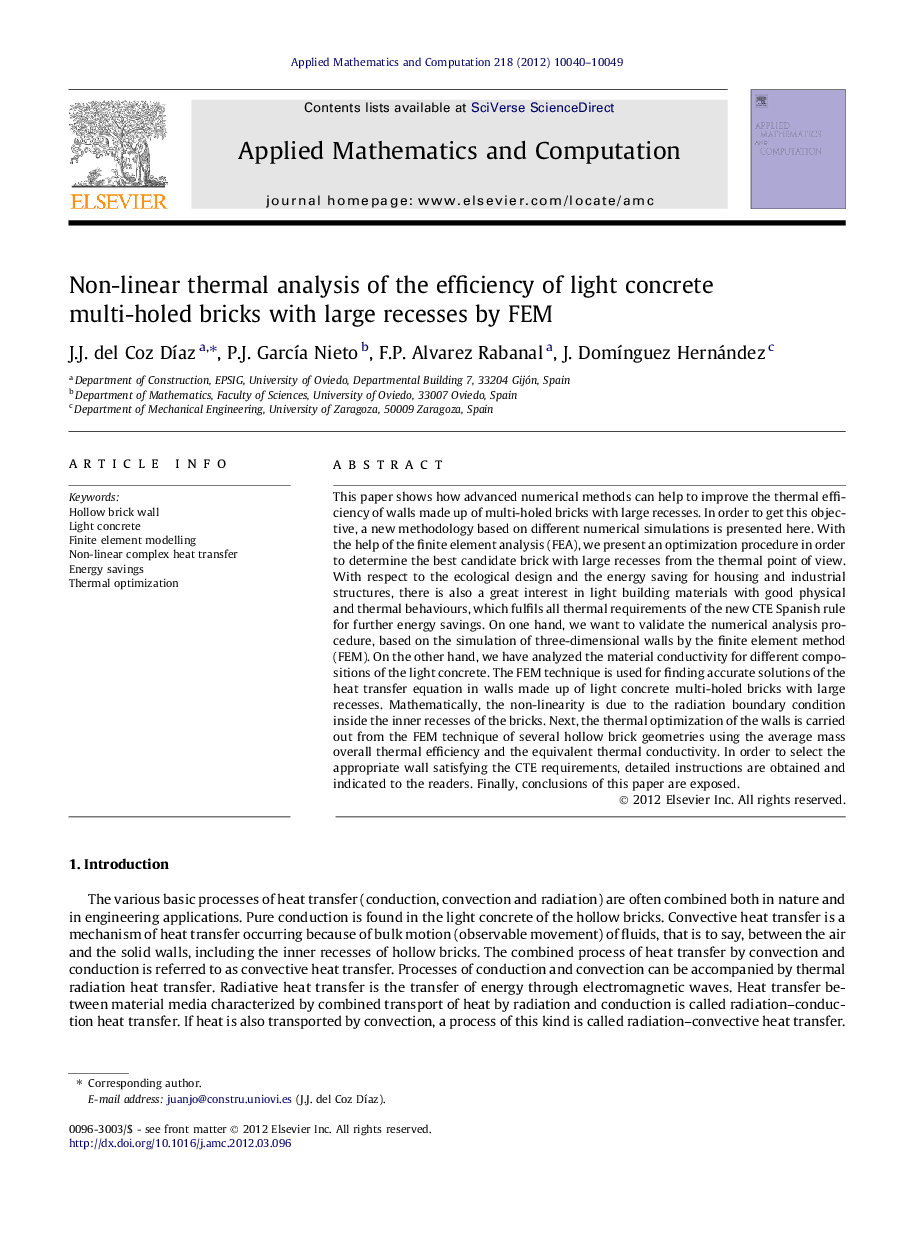| Article ID | Journal | Published Year | Pages | File Type |
|---|---|---|---|---|
| 4629879 | Applied Mathematics and Computation | 2012 | 10 Pages |
This paper shows how advanced numerical methods can help to improve the thermal efficiency of walls made up of multi-holed bricks with large recesses. In order to get this objective, a new methodology based on different numerical simulations is presented here. With the help of the finite element analysis (FEA), we present an optimization procedure in order to determine the best candidate brick with large recesses from the thermal point of view. With respect to the ecological design and the energy saving for housing and industrial structures, there is also a great interest in light building materials with good physical and thermal behaviours, which fulfils all thermal requirements of the new CTE Spanish rule for further energy savings. On one hand, we want to validate the numerical analysis procedure, based on the simulation of three-dimensional walls by the finite element method (FEM). On the other hand, we have analyzed the material conductivity for different compositions of the light concrete. The FEM technique is used for finding accurate solutions of the heat transfer equation in walls made up of light concrete multi-holed bricks with large recesses. Mathematically, the non-linearity is due to the radiation boundary condition inside the inner recesses of the bricks. Next, the thermal optimization of the walls is carried out from the FEM technique of several hollow brick geometries using the average mass overall thermal efficiency and the equivalent thermal conductivity. In order to select the appropriate wall satisfying the CTE requirements, detailed instructions are obtained and indicated to the readers. Finally, conclusions of this paper are exposed.
